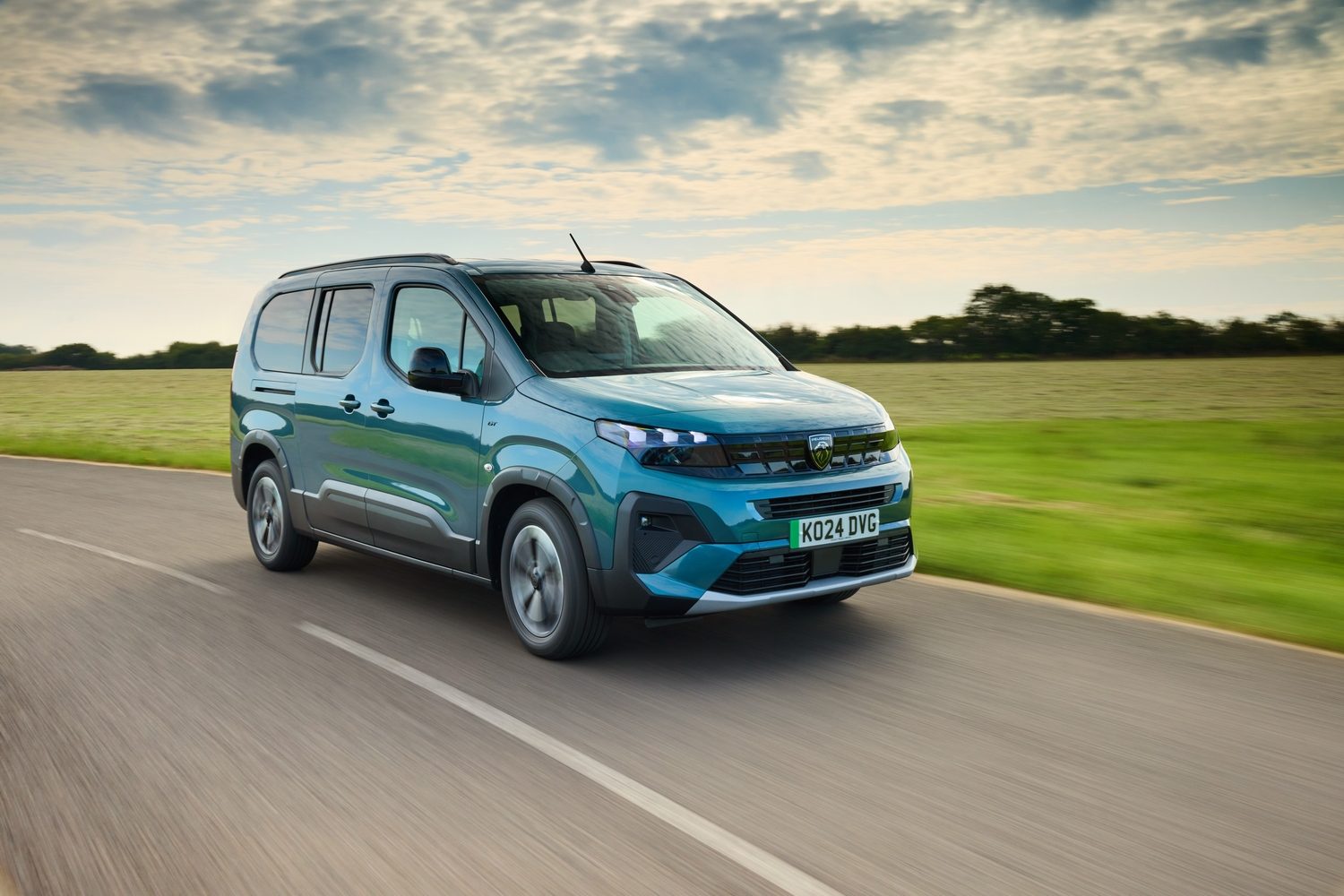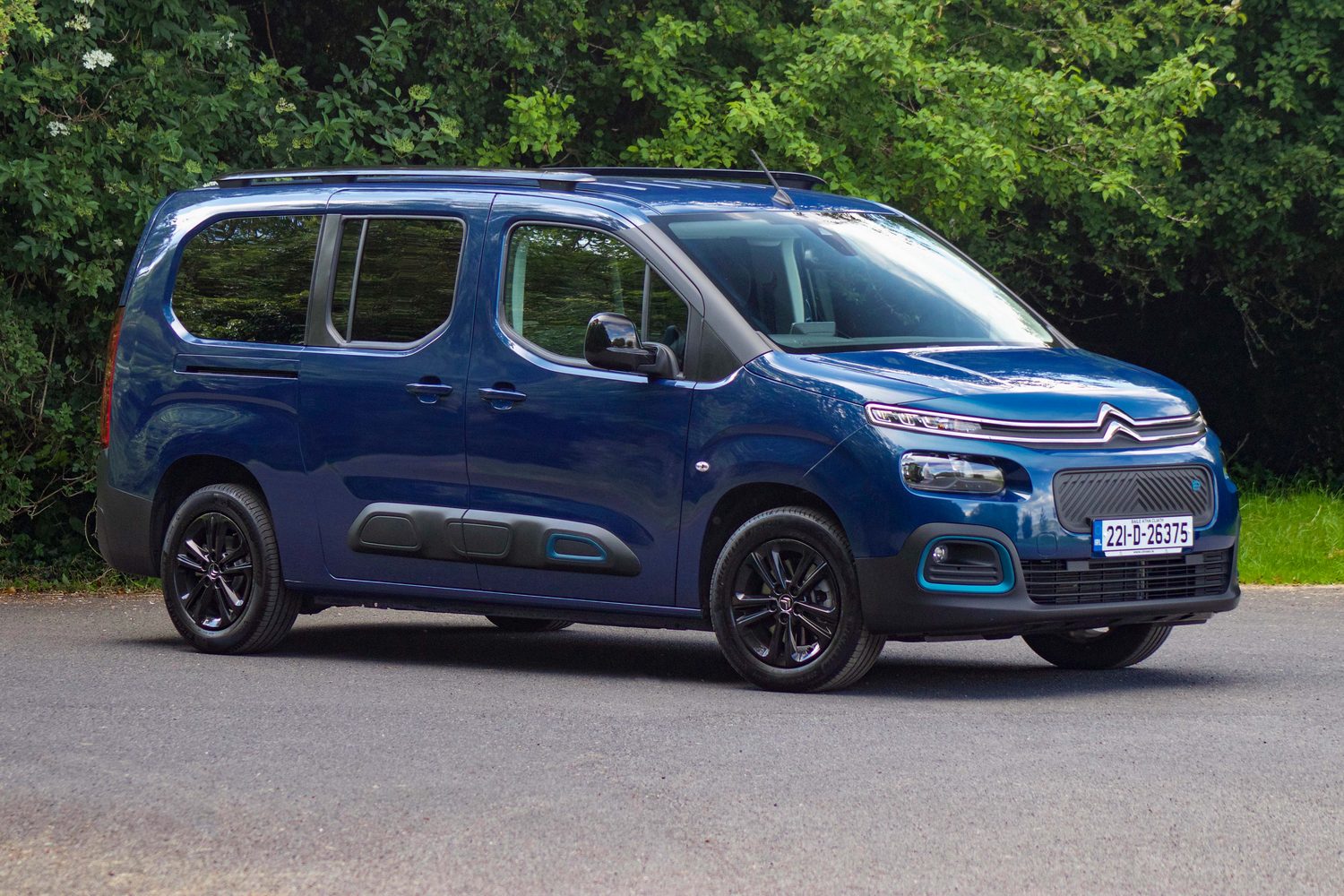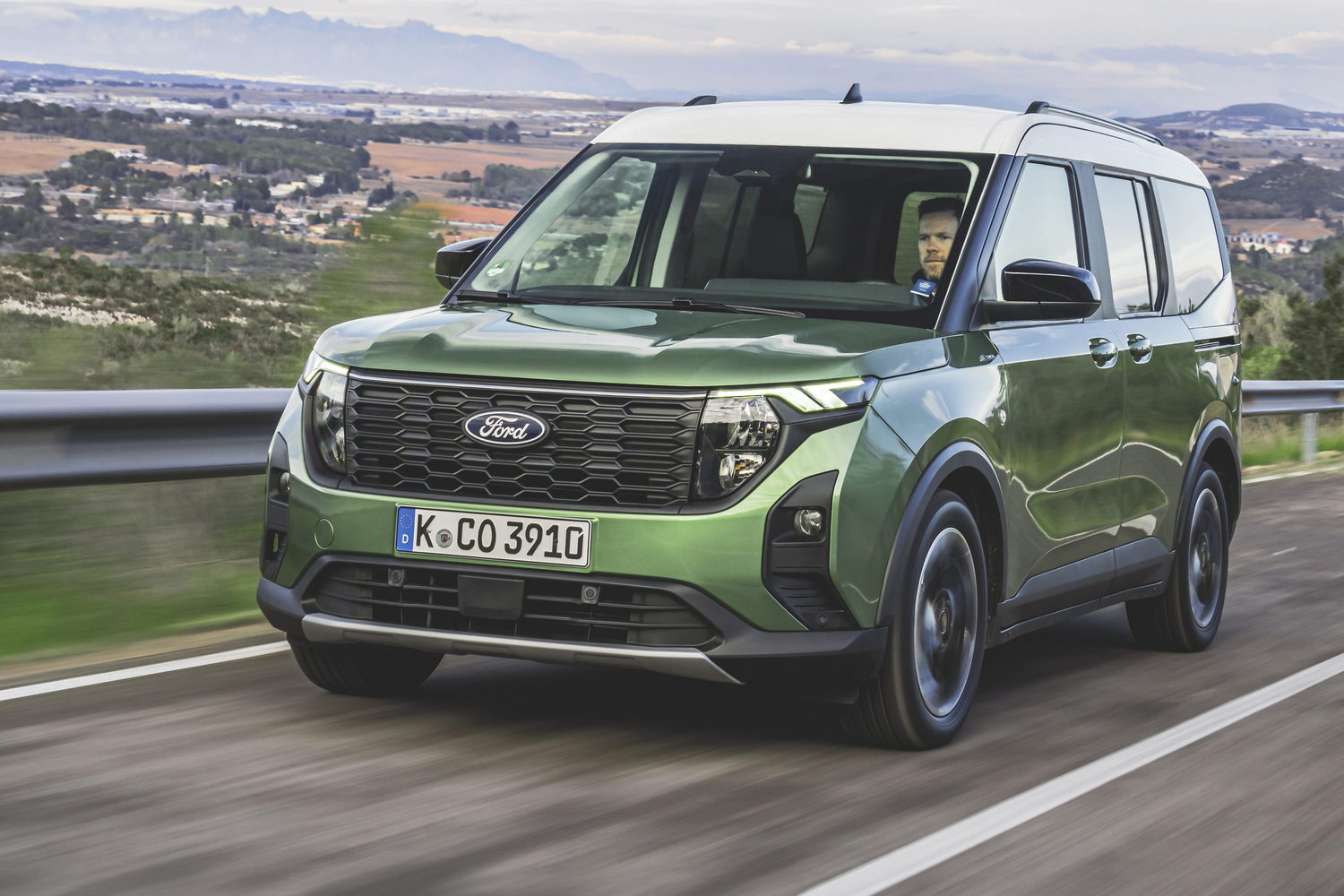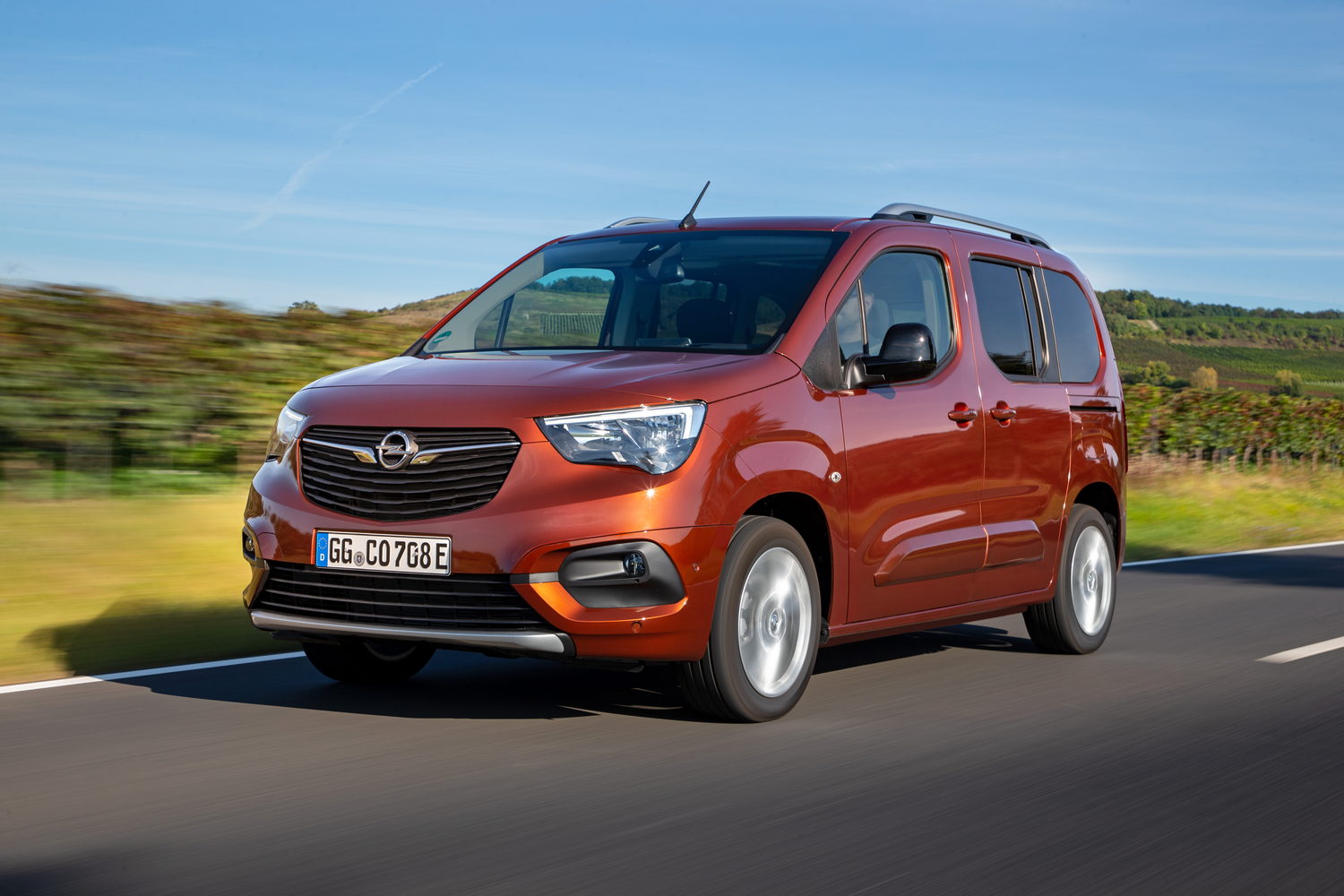People-carriers have never exactly been cool, but these days they’re about as uncool as ever, with customers flocking to big SUVs instead of the humble MPV. So, it’s a bit of a surprise that Peugeot persists with its Rifter, and even more of a surprise to see electric and diesel variants rubbing shoulder-to-shoulder in Peugeot’s range. Yet they do, and the Rifter has been updated with a more modern look and improved tech to try and keep it at the top of the list for buyers who want spacious and efficient family transport.
For this, our first drive of the new-look Rifter, we tested the larger of the two versions - the so-called ‘Long’ or ‘L2’ model - in range-topping, all-electric E-Rifter GT form.
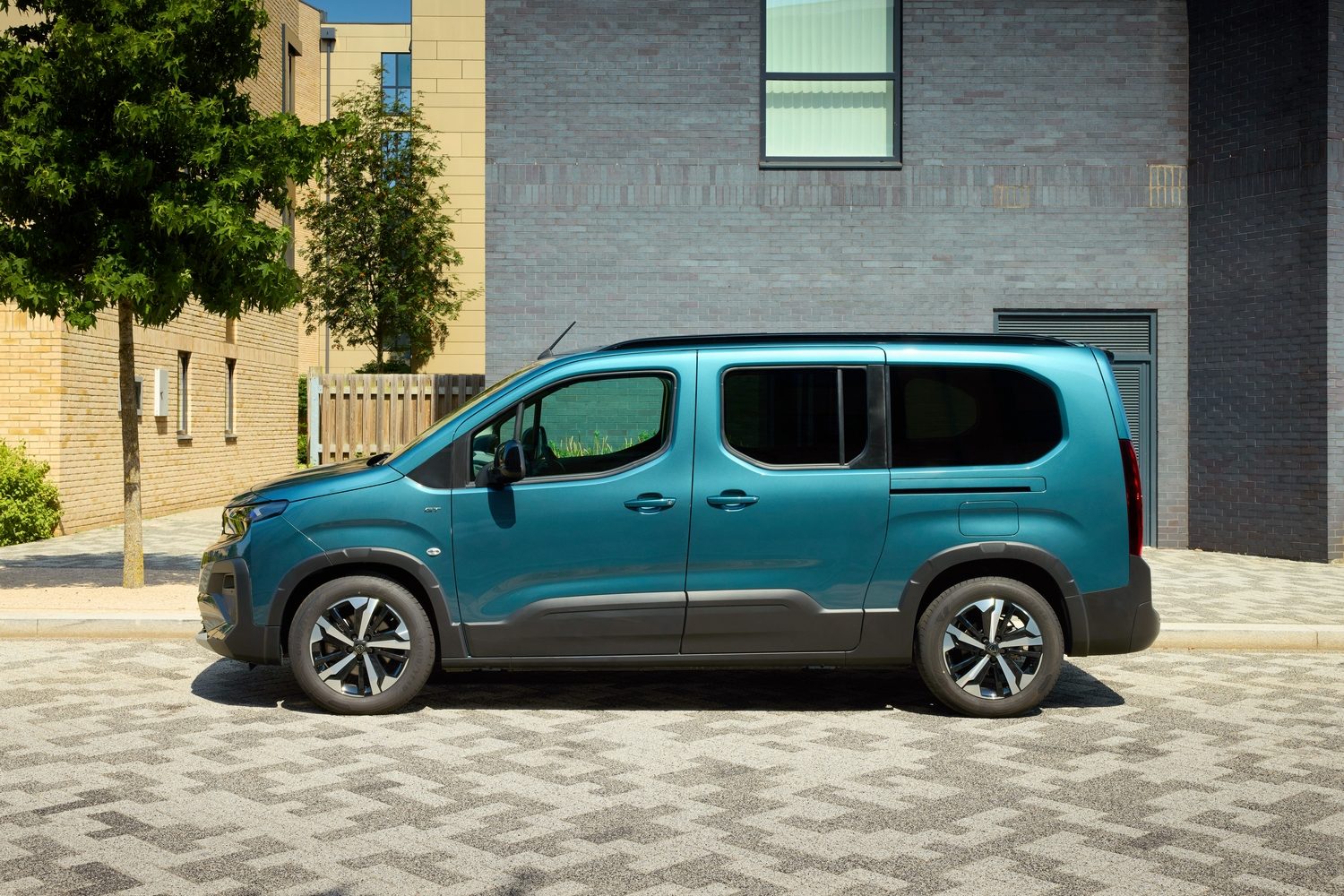
What does the new Peugeot E-Rifter look like?
In many ways, the E-Rifter hasn’t changed all that much. It’s still based on the Partner compact van, which in turn shares much with the Citroen Berlingo and Opel Combo. In short, the shape is pretty generic, boxy and suspiciously familiar, although there’s a choice of Standard (L1) and Long (L2) versions to mix things up a bit.
Nonetheless, Peugeot has revamped the Rifter noticeably, giving it a completely new nose with the French company’s new ‘shield’ logo in the grille. Peugeot has also worked on the headlights, which now get a three-claw, lion-inspired light signature, and there’s a new front bumper to make the car look and feel more modern. It has worked, to a point, and the E-Rifter doesn’t feel as old as its underpinnings really are, but that shape will always look a little bit awkward on the road.
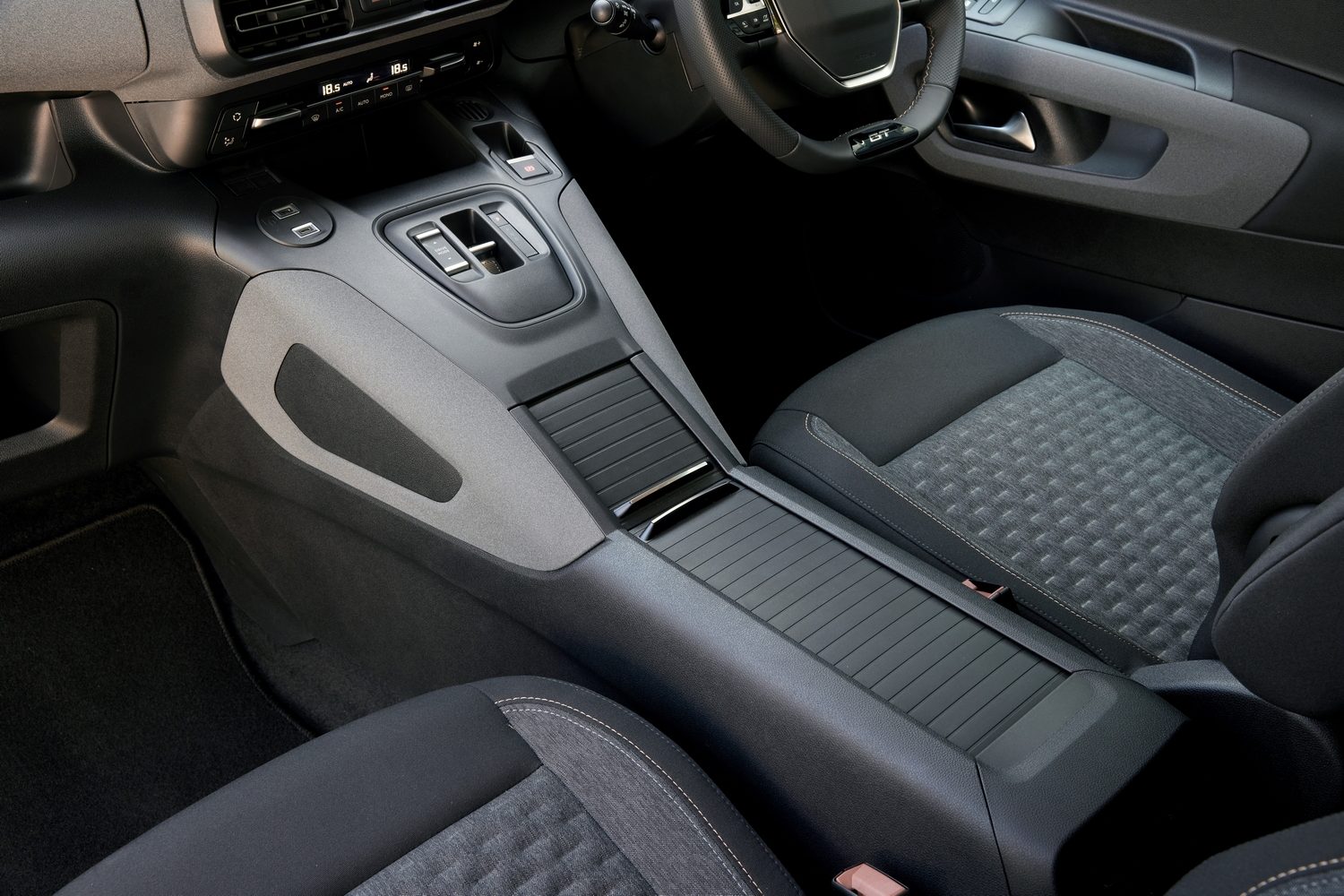
A look inside the Peugeot E-Rifter
The E-Rifter lives and dies not on its design, but on the amount of space inside, and there it fares particularly well. How much room you get varies depending on the version you choose - the Long versions are 30cm lengthier than the Standard ones - but there’s plenty of space in all of them. Base models come with five seats and a 775-litre boot, whereas the Long versions get seven seats, with two fold-away seats in the boot. And it’s a usable seven seats, with enough space for adults to sit relatively comfortably in each, as long as they aren’t too tall. And if you fold all the seats away in the Long version, you get a massive 4,000 litres of luggage space, which is unsurprisingly van-rivalling.
And there’s more to it than that. There are storage cubbies everywhere, from the shelf above the windscreen to the pockets in the doors and everything in between, with a total of up to 186 litres of storage space, depending on the version. Then there’s the question of passenger space, which is more than adequate. Despite the battery under the floor, headroom is ample for everyone, and while legroom isn’t especially generous in the back, it’s by no means cramped in there.
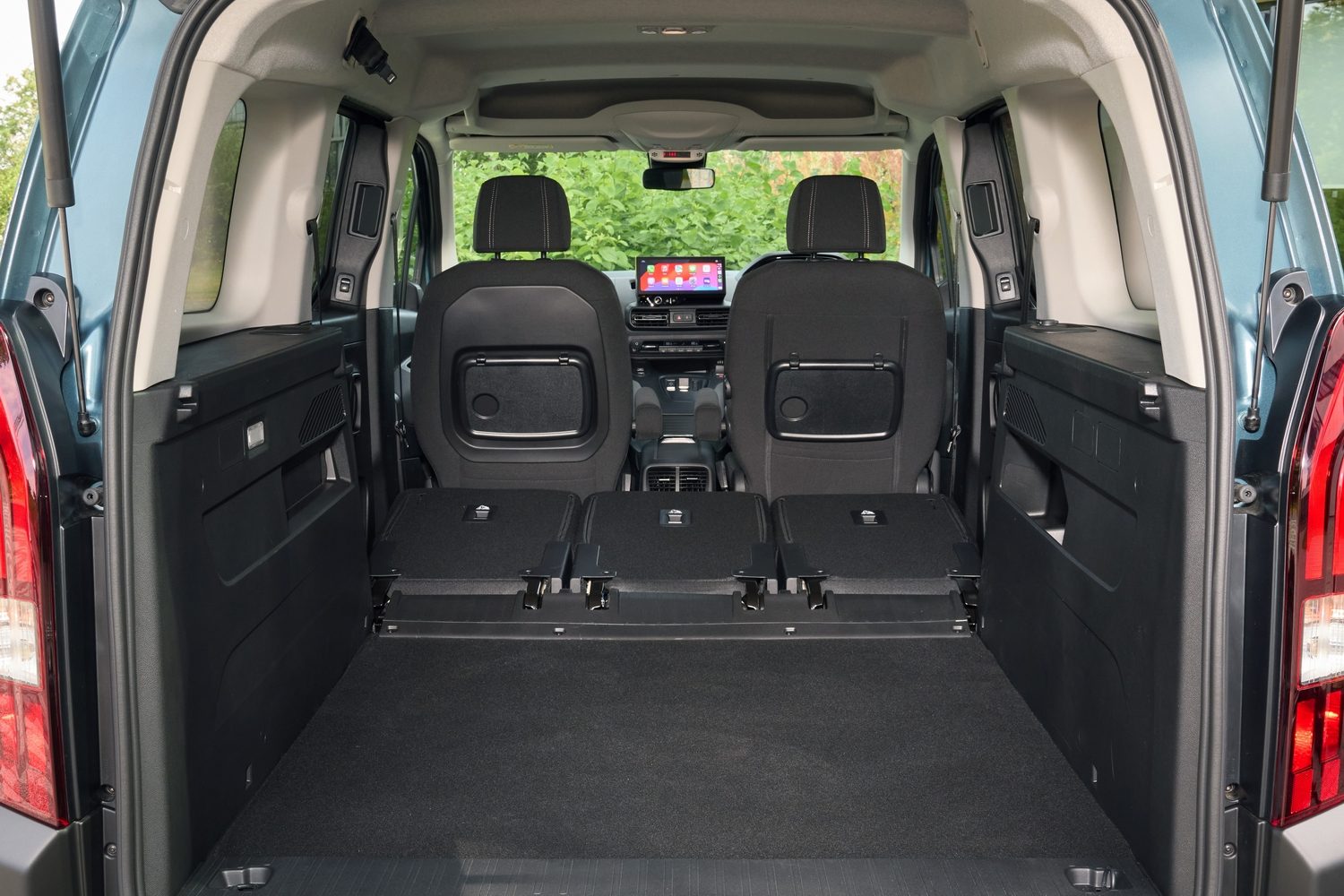
Yet for all the space, design still plays a part. Like every other Peugeot, the E-Rifter uses a tiny steering wheel that feels incongruous in something so big, but there’s a new, enlarged touchscreen and you get a digital instrument display as standard as well. Perhaps function takes over from form in a lot of ways, but the air vents and general layout is attractive enough, if not especially inspirational.
There’s a wide range of materials knocking about, too, and though they don’t feel especially premium, they are solid enough and they seem pretty well joined together. Certainly, the Peugeot feels tough enough to put up with years of being battered by a big family.
The Peugeot E-Rifter’s on-board technology
Chief among the interior updates for the new E-Rifter is the central touchscreen, which has grown significantly, measuring 10 inches diagonally. Yet unlike some cars, the E-Rifter does not fall into the trap of hiding all the heater controls inside that screen, so it doesn’t have too many responsibilities, and the cabin feels much more ergonomic.
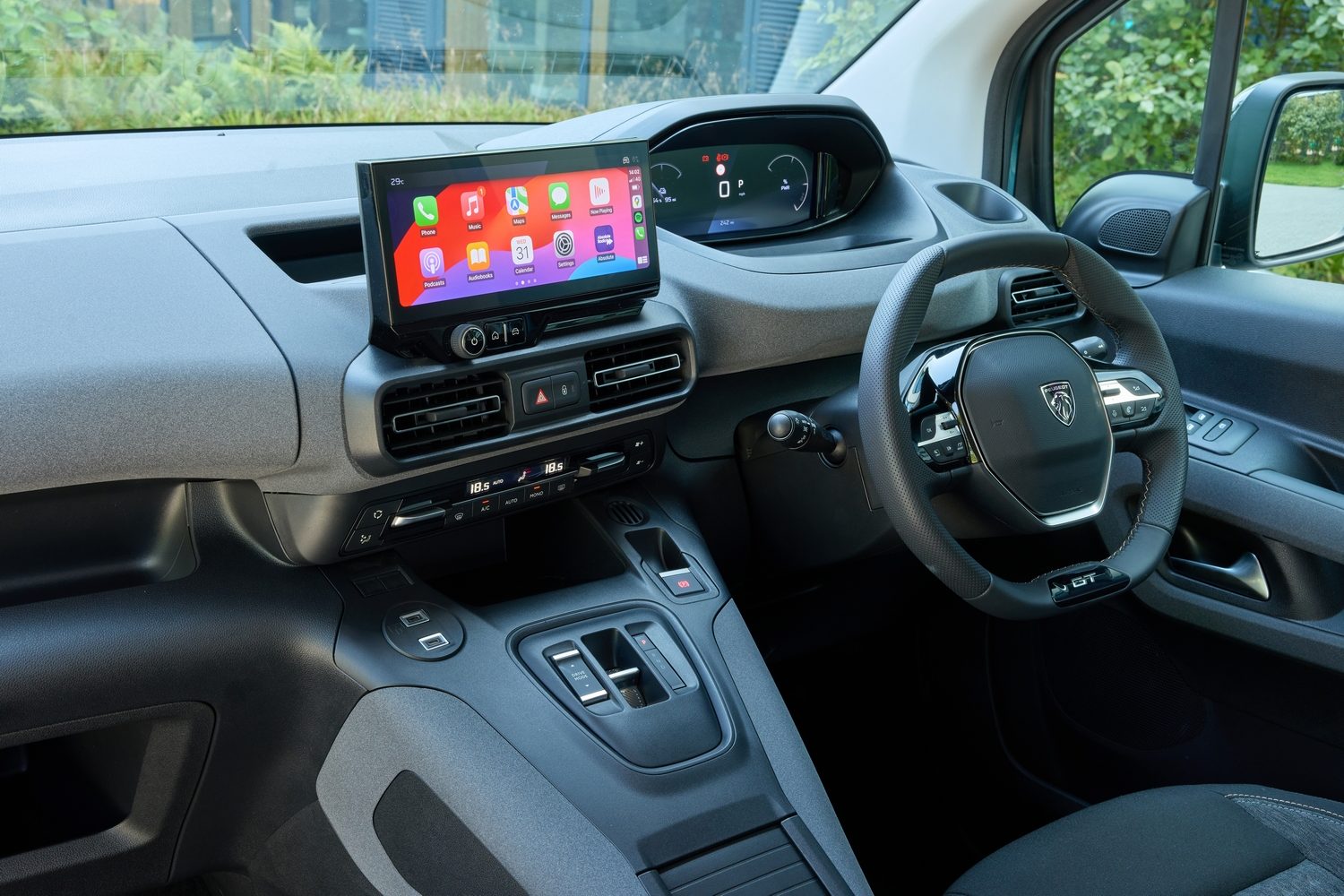
The screen itself is neatly laid out and fairly sharp, although it isn’t always the easiest to navigate - particularly as it can be a bit laggy at times. But it looks modern, and without too many mod-cons to deal with, it feels uncluttered and capable. It also works well with the Android Auto and Apple CarPlay technology that’s fitted as standard.
Similarly, the driver display is perfectly useful, if not especially remarkable. The high-set dials give it a slightly odd driving position that takes a bit of getting used to, but it’s fine after a while. The instrument cluster looks modern and works well, so there’s no complaint from us.
We should also credit the new reversing camera that Peugeot has fitted, because it is noticeably sharper and therefore much easier to use than before. It sounds like an odd thing to mention, but not all reversing cameras are equal, and the one in the old Rifter really wasn’t that brilliant. This is much more like it.
How far will the Peugeot E-Rifter drive on a charge?
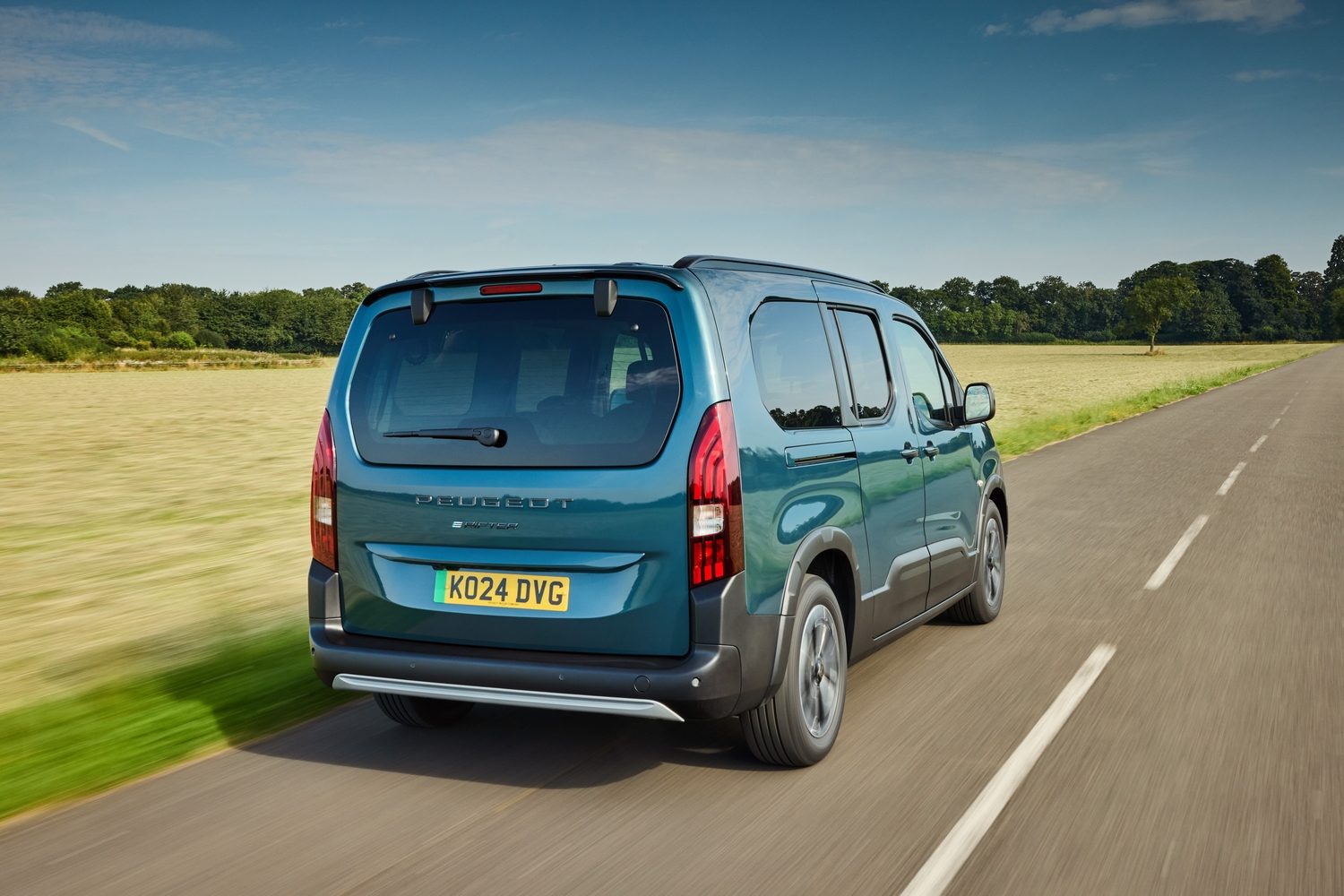
Whichever E-Rifter you choose, you’re landed with a 50kWh lithium-ion battery pack that powers a 136hp electric motor. In fairness to the powertrain, which drives the front wheels alone, 136hp is more than enough for a car of this size, particularly when it’s backed up by the instant torque of an electric motor. The E-Rifter feels remarkably responsive, and it accelerates perfectly happily up to motorway speeds. You won’t be able to irritate the guards too much, though, because the top speed is a mere 133km/h.
And if you try driving at anything like that speed, you can wave goodbye to the official battery range of 343km. The Rifter simply won’t do it at anything above urban speeds, where the regenerative braking helps it recoup some energy. Drive on the motorway, and you’re probably looking at around 250km to a charge, which is an improvement on the old E-Rifter, but perhaps not quite the improvement for which some were hoping.
At least the small battery charges relatively quickly. Plug in to a 100kW charge point and you’ll be able to recharge that pack from empty to 80 per cent in less than 40 minutes, assuming conditions are optimal. And if you use a domestic 7.4kW ‘wallbox’ charging point at home, you can recharge the battery completely in less than seven hours, which means you can plug in in the evening and it’ll be ready when you wake up.
Driving the Peugeot E-Rifter
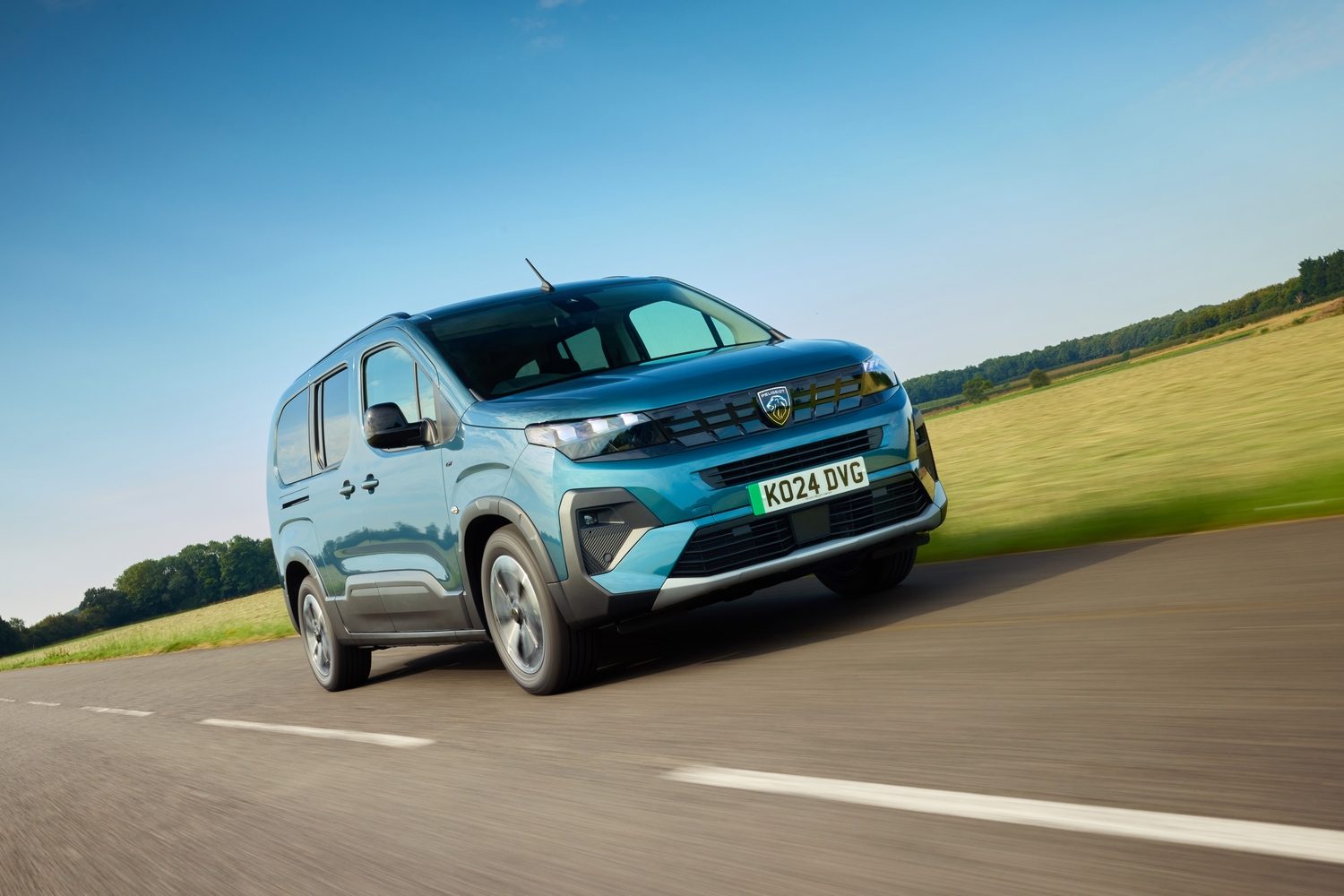
Sportiness is clearly not high on the E-Rifter’s agenda, and the car drives accordingly. Comfort is evidently the priority, with quite soft and supple suspension that does a decent job over potholes and speed bumps and the like. It won’t match a silky upmarket limousine, but it certainly doesn’t feel like a van, which is an achievement given the vehicle it’s based on. A few really broken surfaces will upset the applecart slightly, but on a motorway or in a town centre, the E-Rifter is generally very comfortable.
And despite all that, it doesn’t handle badly either. The steering has reasonable weight to it, and though the big body leans a bit in corners, there’s plenty of grip. You aren’t going to panic if you’re going around a roundabout at 50km/h, and if you push it on a country road, the Rifter will take it. Just about.
We doubt many customers will do that, though, so the E-Rifter is generally going to prove an easy and relaxing thing to beetle about in. Visibility isn’t bad considering the car’s roots as a commercial vehicle, and there are sensors to help with manoeuvring. It’s fairly quiet, too. You might expect that from an electric car, but for a big and airy MPV, wind and road noise are kept in check well enough.
How safe is the Peugeot E-Rifter?
Euro NCAP, the independent safety body in Europe, has not retested the Rifter since its update, but the pre-facelift car received a four-star rating when it was tested in 2018, and the only real reason it missed out on a full five stars was the car’s protection of pedestrians and cyclists. Its adult and child occupant protection scores were exemplary.
Peugeot will probably want the Rifter to be retested, though, because it now has a little more safety kit thrown in. There are improved parking sensors and a better reversing camera, as well as more driver aids than before, with 18 in total. These include adaptive cruise control, tiredness warning and traffic sign recognition, as well as autonomous emergency braking with pedestrian and cyclist detection.
How many child seats can you fit in a Peugeot E-Rifter?
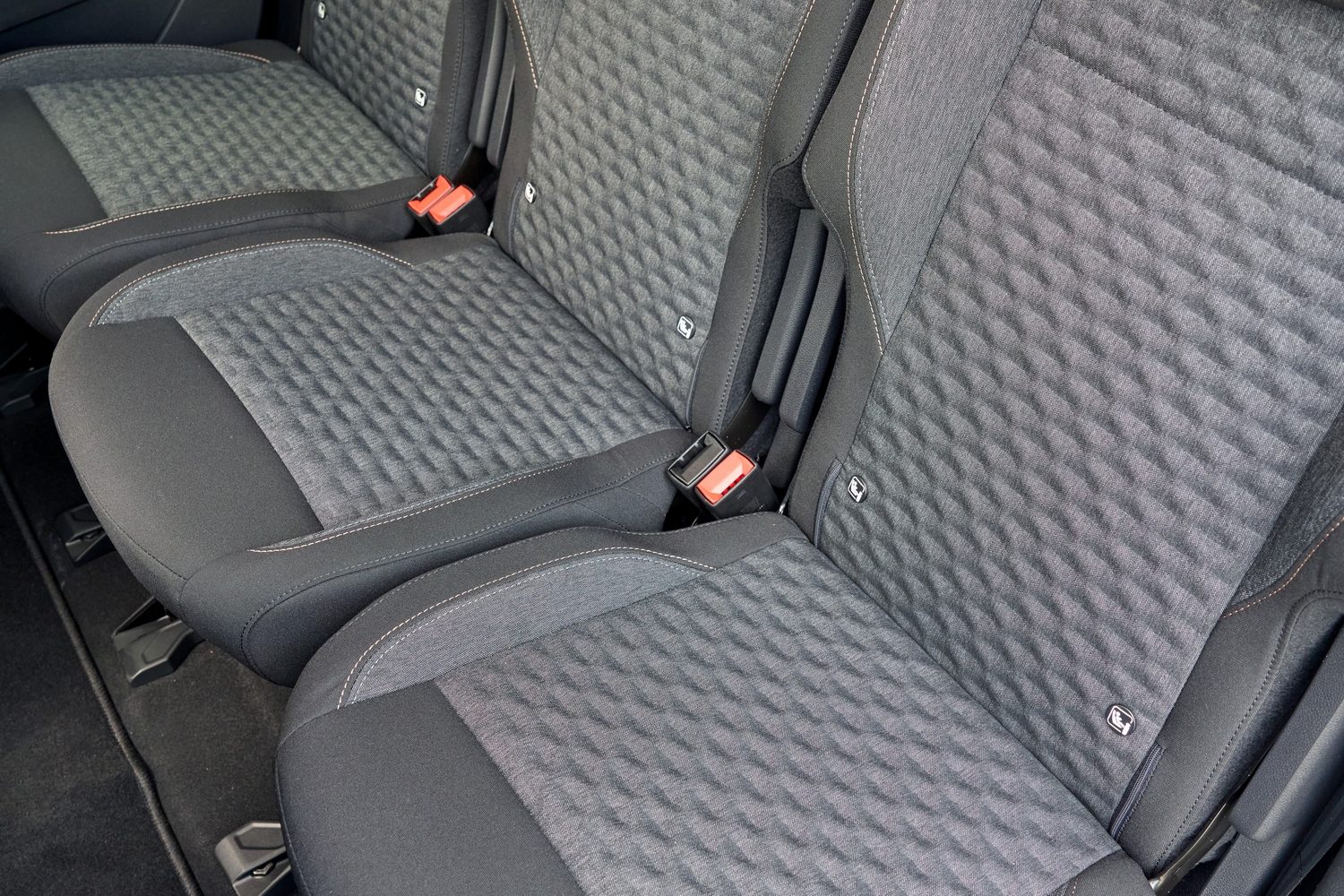
With a focus on family life, it’s no surprise to see plenty of ISOFIX child-seat mounting points in the E-Rifter’s cabin. In fact, you get three dedicated mounting points on each of the three back seats (or middle seats if you choose a seven-seater). Getting three child seats in there might not be much fun, but it is probably doable with a bit of fiddling - the Rifter is a wide car, as well as a long one. And those big sliding doors mean access should be fairly easy.
How much does the Peugeot E-Rifter cost in Ireland?
The E-Rifter range starts at €38,660, which pays for the basic Allure version in shorter ‘L1’ or ‘Standard’ form. That means you get the 10-inch touchscreen, a heated leather steering wheel and manual air conditioning, as well as a 10-inch digital instrument display, LED headlights and rear parking sensors. But if you pay about €1,500 more, you can have the GT with its larger alloy wheels, improved audio system and slightly more stylish design.
Or you can upgrade to the ‘Long’ or ‘L2’ version we tested, which commands a premium of around €1,000 over the equivalent L1 E-Rifter models and provides a bit more space. Upgrading to the L2 unlocks the option of a 1.5-litre diesel engine (from €37,995) with either a manual or automatic gearbox. However, diesel Rifters are only offered in base-spec Allure trim.
The reasons you’d buy a Peugeot E-Rifter
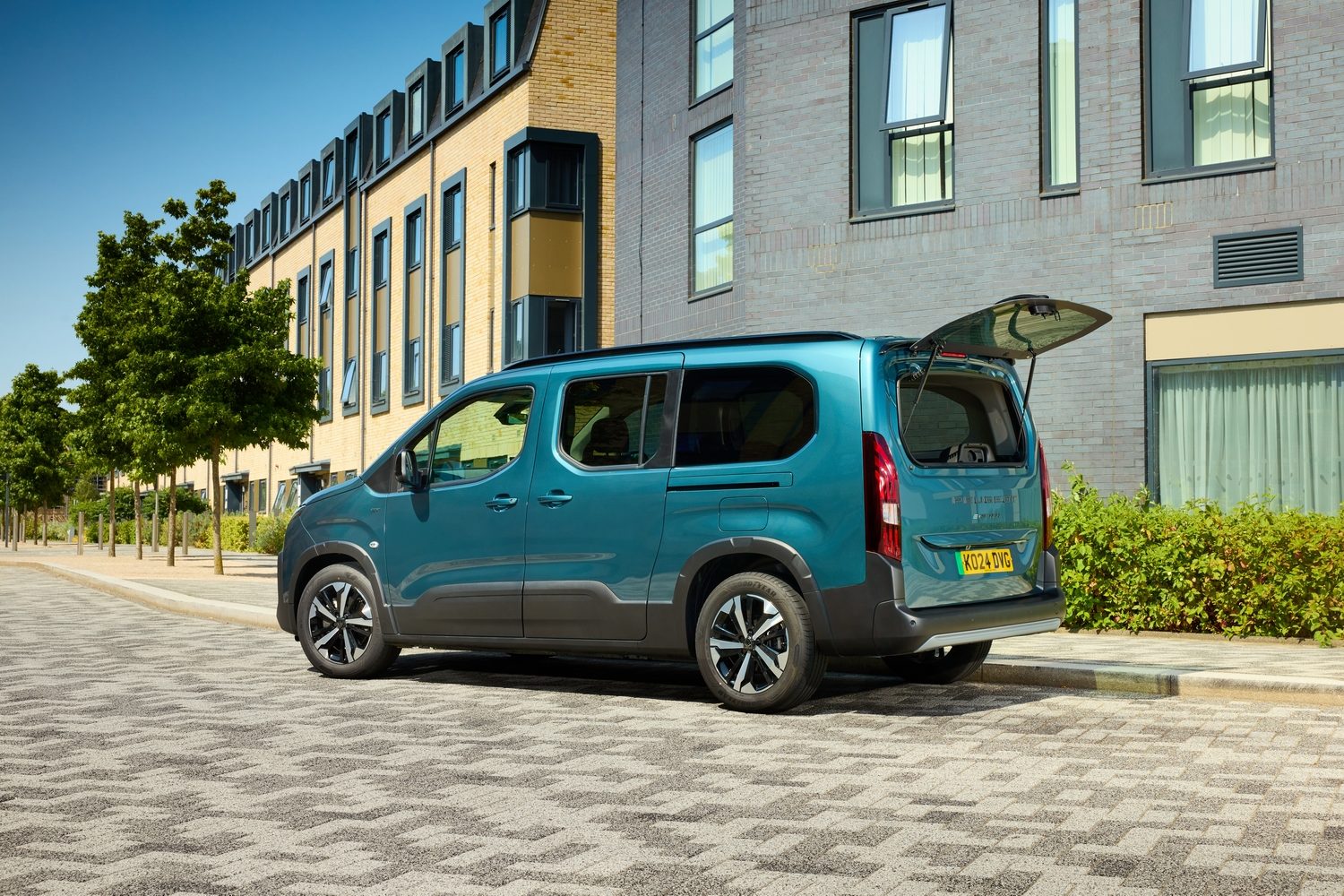
The E-Rifter may not be the sexiest thing on the market, but if you want spacious and efficient family transport for pootling around town, it’s the perfect thing. Yes, other cars provide some of the same qualities, and the range isn’t great if you want to up your speed, but the new-look Peugeot is one of the more stylish and comfortable options out there, and its electric powertrain gives it useful performance.
Ask us anything about the Peugeot E-Rifter
If you want to know more about the Peugeot E-Rifter, or any other product in Peugeot’s portfolio, or even any other car on sale in Ireland, then head straight on over to our Ask Us Anything page. There, you’ll find our free advice service that allows you to pose your questions, then our team of experts will get back to you with an answer. And the best bit is, it’s completely free of charge.

